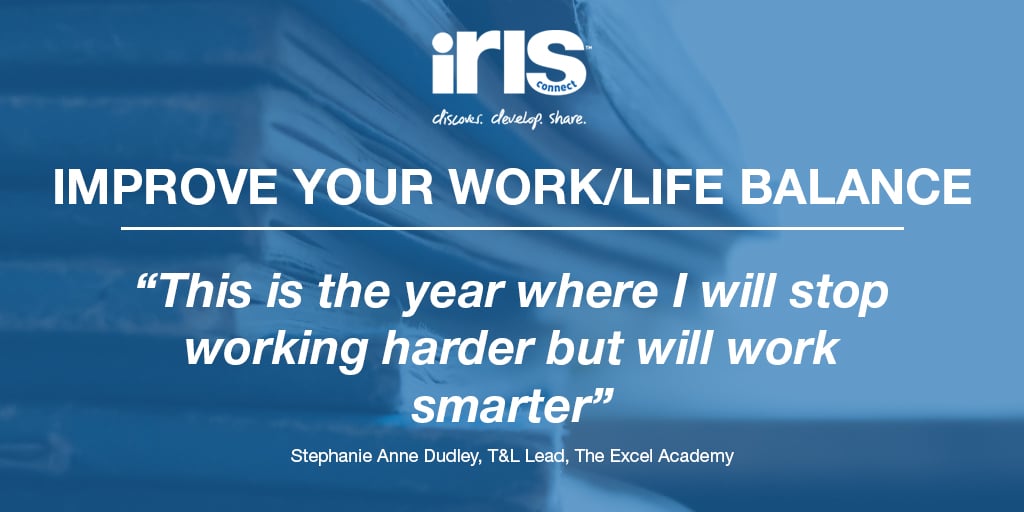Unfortunately, being a teacher is difficult. Really difficult.
The reality of it is that it is a vocation, as no one would work over a fifty-hour week unless you really believed in it, deep down. In approaching my seventh year of teaching, I feel that this is the year where I will stop working harder but will work smarter.
The main question I will be asking myself this year is: "Am I going to mark this? Why? And, most importantly, what is the point?"

1. Purposeful Feedback
Despite the delightful portrayal of the teaching profession through Diaz’s Bad Teacher and Black’s Ned Schneebly in School of Rock, we all want to give feedback to our students and for them to subsequently improve. Thus, this academic year our academy has moved away from recording strengths and weaknesses to simply just informing students what they need to do to improve. ‘Well done, Dave’ produces an ego boost but it sadly fails to gain the high grades that we know students are capable of. As much as we all love a bit of praise, this change is clearer for students and staff, alike.
2. Bingo Dabber Marking
I am a huge lover of time saving; why would I write the same comment thirty times when I could be making better use of time like planning lessons or catching up on the latest reality programme. Three years ago, I implemented Bingo Dabber marking and it truly changed my life.
Bingo Dabber marking can be used in a variety of ways:
- Use a Red or green dabber at the end of every lesson to indicate understanding. Plan for your next lesson’s starter to have a task to correspond with the colour.
- Have a criteria and a colour for each item: Tasks to go with each element of the criteria to improve the work. For example: Pink – Punctuation, Blue – Connectives, Green – Vocabulary.
The result of this was that I was checking my books more frequently and feedback had a purpose.
3. Traffic Light Marking
For subjects that can be considered more right or wrong, such as Mathematics, give students a traffic light stamp at the end of each lesson. It then only takes a maximum of ten minutes to whizz through student books identifying whether they are red, amber and green and this informs the next lesson’s planning.
4. Books open on marking page
Despite it seeming overwhelmingly obvious, leaving all books open at the marking page does actually speed up marking. It means that you are completely focused on those pages and there is less likelihood of you becoming distracted and marking notes that don’t need marking or gluing sheets in.
5. No tick and flick
‘It is okay to leave a page unmarked.’
If someone was to tell me this in 2015, I would have said, ‘you’re wrong’ or ‘but what about Ofsted?’
But the reality is that it is okay to leave a page untouched if you are not going to mark is thoroughly. Is leaving a small red tick going to support the students’ learning? Or even a nice personalised stamp? Despite the books looking pretty it really does not move learning on.
Recruitment and retention is a huge issue within the teaching profession that no regular staff yoga can fix as a nod to wellbeing. It is often workload that forces people to change professions. As outlined in The Guardian, ‘High workload and poor work-life balance were cited by several teachers as causing low levels of wellbeing.’ We are, for certain, making waves in improving work life balance for teachers. Such strategies certainly work, only if used consistently.
In a world of negative press and criticism, it is about working smarter, not throwing more hours to the same thing and praying for change.
As educators, we know that school does not finish when the bell goes at 3pm. But in such a rewarding profession, if we can make changes to make better lessons and less marking then I am all for it.
As Springstein says: ‘it demands a consistency of thought, of purpose, over a long period of time.’
The same is true for feedback – make a plan, train the students and progress will inevitably come.
Eventually.
For more tips to improve teacher wellbeing, check out this blog: Sustainable solutions for improved teacher wellbeing
Guest blog by Stephanie Anne Dudley, T&L Lead, The Excel Academy @Sad_English



Leave a comment:
Get blog notifications
Keep up to date with our latest professional learning blogs.